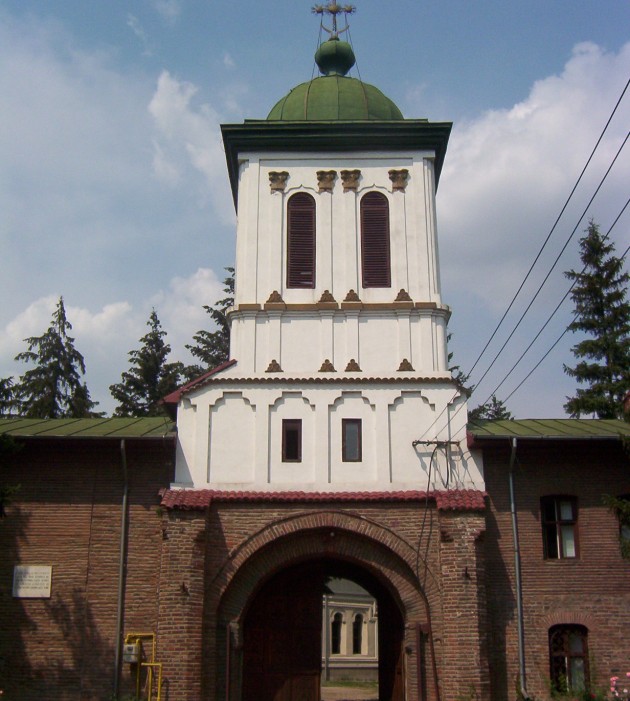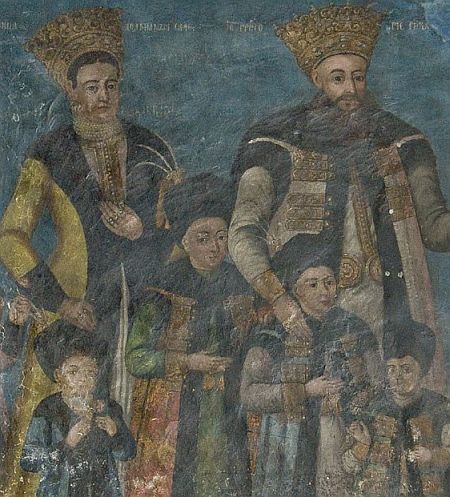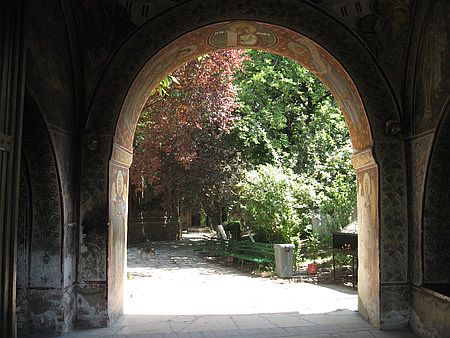In dreams, unfamiliar buildings turn up in familiar landscapes and I, like many people, quite often dream of churches. Sunday was dreamlike. The sun shone very fiercely in late October and Mihai led me to three astonishingly beautiful old churches whose existence I had never suspected, all inside the city boundaries of Bucharest and inside the ring road.
I always mourned the beautiful old churches destroyed when Bucharest was rebuilt and reinvented as the Paris of the East after independence from in 1877 but there are the very fine ones that still stand, largely unknown even to many Bucuresteni, surrounded by forests of jerry-built Communist blocks of flats. These are churches I would gladly travel three hours to see yet they are fifteen minutes by car on a Sunday from kilometre 0, where I live.
 |
| Plumbuita |
Mass was being sung when we reached Plumbuita, a fortified monastery rebuilt by Matei Basarab to commemorate his victory over the Turks in 1652. Mihai explained to me that the Sublime Porte did not allow the Wallachians to erect fortresses so monasteries with strong walls and towers were built instead; The name Plumbuita derives from the lead roof which covered the church for centuries.
Fundenii Doamnei is somewhat newer and was built in the reign of Constantin Brancoveanu. It too has a serene garden It is in a poor state of repair, which irresponsibly pleased me because I like the patina of age and am startled when a church is as well restored as say the Stavropoleos church is. Fundenii Doamnei is second only to Stavropoleos for sheer beauty and is remarkable for some very fine tracery on the outer walls which Mihai explained was influenced by Persia.
 |
| Fundenii Doamnei |
 |
| Fundenii Doamnei |
When I first visited Mogosoaia Palace it seemed to me like my idea of a palace in India. After I had been to India I still saw the similarity. Only today did I learn from Mihai that this is not a coincidence. The Mughal architecture in India is of course Persian in origin and so was the architectural fashion in Romania around the year 1700. a time when Romania, as it was not then called, was cut off from Catholic Europe and open to the Muslim world.
Mărcuța, was a monastery founded in 1579, rebuilt in 1679 by one Marcu, who gave the monastery his name, suffered in an earthquake and was restored in the 1820s when the monastery became a mental asylum. The monastery dissolved in 1864 when Alexandru Ion Cuza laicised many monasteries. It is good-looking and has some very fine wall paintings, but most of all I liked the very serene grounds and palpable sense of deep peace.
 |
| Mărcuța |
 |
| Mărcuța |



Just by the way, My brother has a lovely daughter adopted from Romania. We are English-German heritage. My brother's wife of Russian.
ReplyDeleteI made a comment on this Post preceding the 'just by the way' (mine) comment which was somewhat relavant. Without the preceding, the following seems quite out of the blue
ReplyDelete